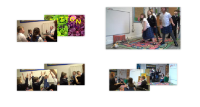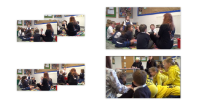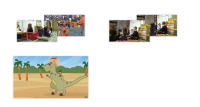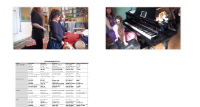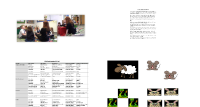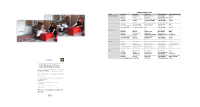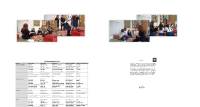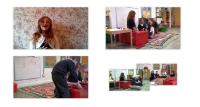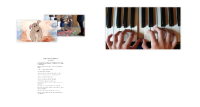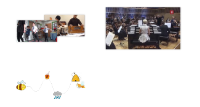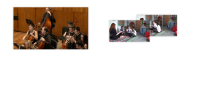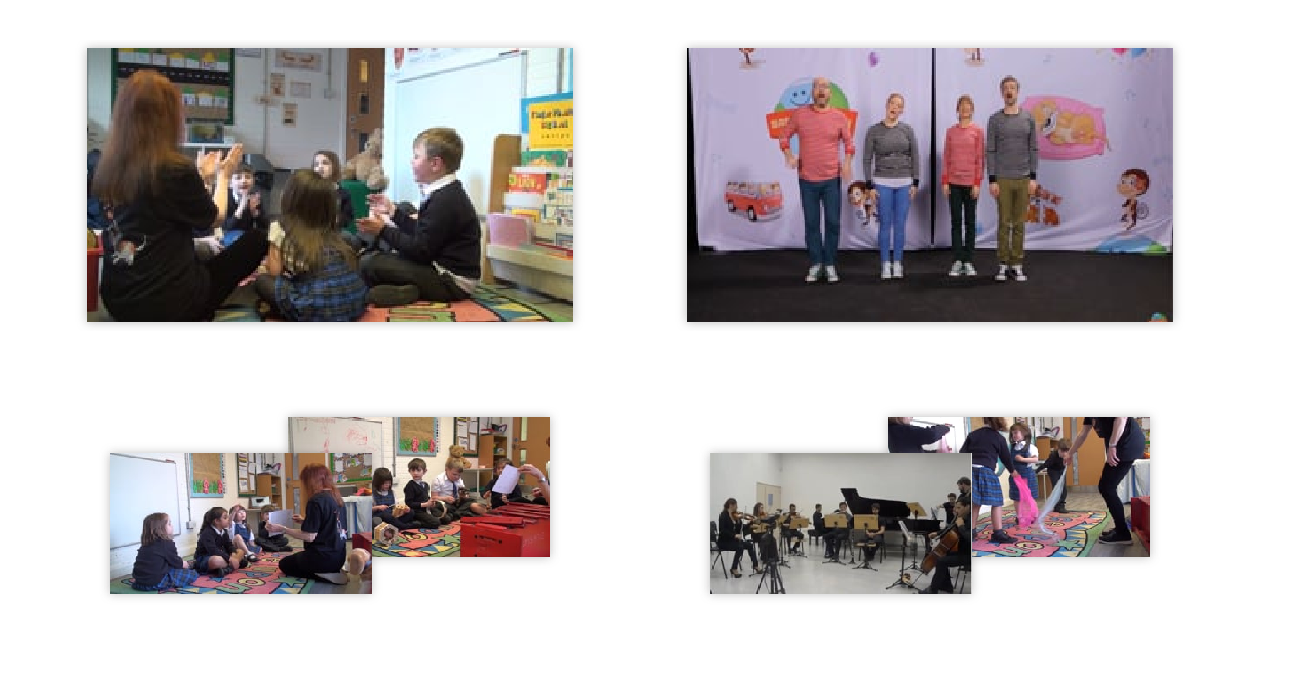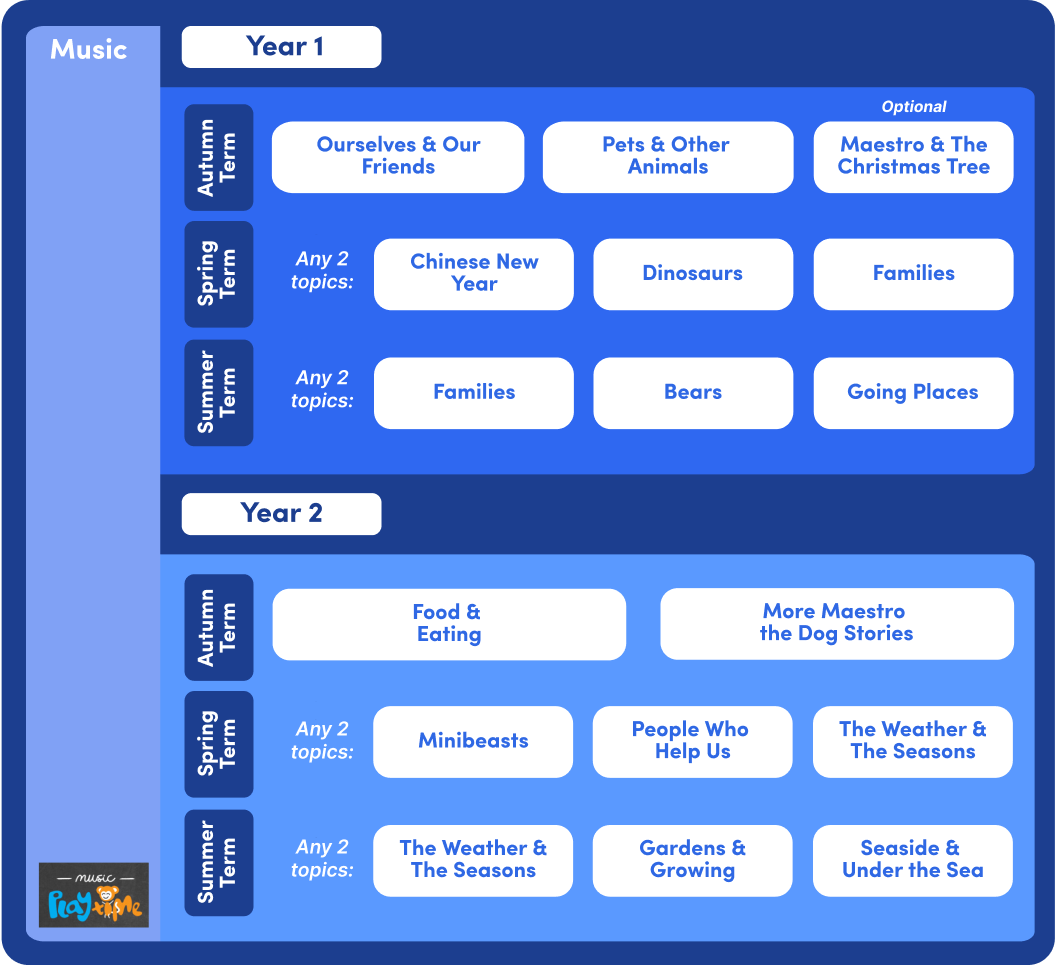Seaside & Under the Sea Level: Key Stage 1
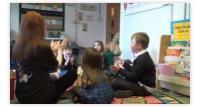
A Seaside Holiday Game
I remember the excitement of having a new beach ball when we went on holiday as children! Here's a game that could also be played by a family on the beach.
Seaside Holidays Stories
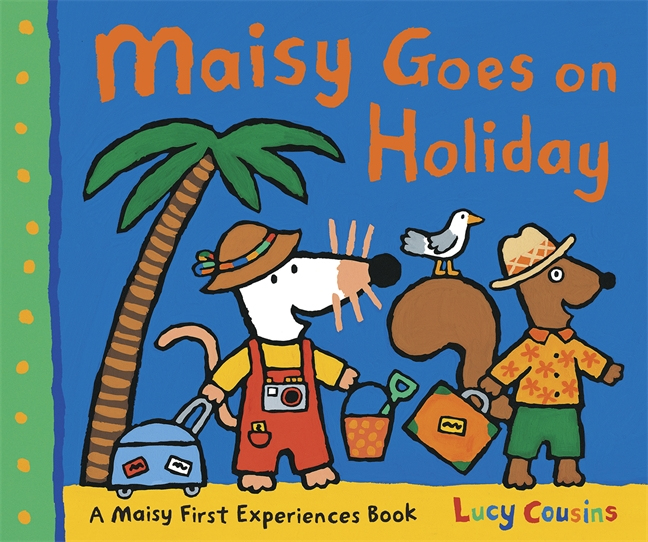
First talk with the children about school holidays and outings they have been on. Has anyone been to the seaside?
Then play a song or a piece of music that reminds you personally of holiday time (children love knowing more about you!) and tell a story about a seaside holiday, maybe your own holiday when you were a child, or Maisie Goes on Holiday. I'm a closet Peppa Pig fan and the Peppa Pig Goes on Holiday video is great fun!
Who is the Pirate? (timbre)
This is a voice recognition game so the children need to know each other reasonably well for it to work. Everyone sits in a circle or on the carpet. Each child in turn goes behind a screen so that they can't see the rest of the group. The teacher points to a child within the group, who then says, 'I am the pirate! Hand over your silver and gold!'. The child behind the screen has to guess which child spoke. Every child has a turn at guessing and at being the pirate.
You may be surprised that, even if you ask the children to make it harder by disguising their voices, the other children still guess who it is!

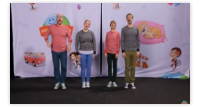
Apusskidusski (two ways!)
This is a traditional Swedish song, with a lovely tune, called I Medelhavet. Here is an approximate translation of the original words, with an additional verse that I made up. It's a song for a mother or father to sing to their child, but you could ask the children what they think the words mean and then they could make up a third verse. In this version, the song is almost like a lullaby.
- In middle ocean
- Sardines are swimming
- Apusskidusski Apusskidu
- But in my own heart
- You're swimming too
- Apusskidusski Apusskidu
- __
- Up in the blue sky
- The birds are flying
- Apusskidusski Apusskidu
- But in my own heart
- You're flying too
- Apusskidusski Apusskidu
In the video, the song is begins in Swedish and is then translated into four other languages, including English. You'll be amazed at how different the song sounds at an upbeat tempo and I wonder how many children will prefer this version! Sometimes children surprise me with a preference for gentle music.
Down There Under the Sea
You'll probably need to listen to this song and sing along several times to learn it really well before teaching it, as it's easy to muddle up the words, big blue ocean and deep blue sea! You could teach it using the First Me, Then You method and then use the sound track to sing along to. The verses go in this order:
- Lots to see
- Lots of fish
- Whales and sharks
- Crabs and shells
For each verse, choose different instruments for children to represent the different things in each verse eg shell shakers for their verse about crabs and shells – shake only on the words crabs and shells, and so on.
Row Row Row Your Boat
The children love doing rowing actions in time with this song, sitting one behind the other with legs out to the sides. I like to do the original verse first, with the ending Life is but a dream - this way, the children enjoy the 'naughty' version about the crocodile even more! The song is so well known that I have not written out the words.
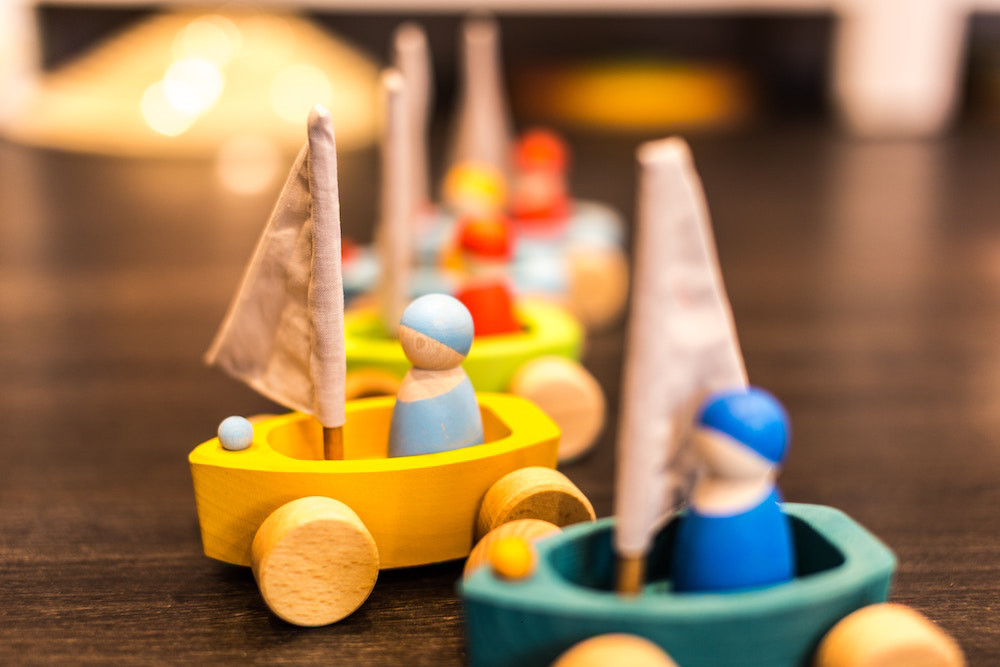
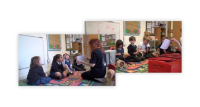
Seaside Graphic Scores (downloadable)
The children need to work in small groups and ideally they be able to choose from a range of untuned and tuned instruments. They could go to the music corner group by group, then come together at the end of the day for performance time.
1/ Structured Seaside Score - Voices (structure, pulse, rhythm)
The children understood the score quickly and we performed it first using just voices. There are three lines to this graphic score and it's read from left to right like text in a book, and like conventional notation. In line 2, the shark and the seagull sound at the same time, like in a musical score where more than one note is played at the same time.

Using Instruments (timbre, structure, texture)
When instruments are used instead of voices, using two instruments played together in line 2 creates a thicker musical texture. I added a steady pulse on the xylophone, to keep everyone in time, which added another layer of complexity.
2/ Unstructured Seaside Score (texture, timbre, pitch)
This score is more of a suggestion and is less formally structured than the previous one so it may focus more on the elements of texture, timbre and pitch. The children have the same choice of instruments but the structure is less formal so each group of children can make their own interpretation.

Stepping Over the Waves Game (a performance piece)
You'll need plenty of space needed – it could be outdoors in summer, or in the hall. I saw it done by a dance company and it's actually really easy!
Half the class lies end to end in 4 rows of around 4 children. They roll slowly towards the other children who walk, in 4 rows of 4 children, towards them and step over them as if stepping over waves. This looks very effective from the front and can be used in an assembly or school performance – but not recommended on a raised stage in case someone rolls off!
You could use any suitable music, but this sea sound-effect works particularly well:


Seaside story sound picture (texture, structure)
Before you begin, download and print out Seaside Story. First, the children listen to the recording below, then ask them where they think it is and what is happening. Notice and draw attention to the fact that the sounds are happening at the same time (thick texture), not on their own, one after the other (thin texture).
Next, ask the children think of all the sounds they might hear on holiday near the sea. Then the children go in groups, with a classroom assistant, to the music corner to experiment with using body sounds, found sounds and instruments to create seaside sounds. Some of the sounds might be made on their own (thin texture) and some at the same time as others, creating a thicker texture.
When each group has had their turn at the music table, explain that you are going to make a sound picture in which each group makes the sound they are responsible for at the right time in the story. Then read the story and ask for suggestions of who should make which sounds, and where. The story starts and ends with silence. When everyone is ready, read the story accompanied by the sounds, and make a recording of it.
Extension
A really effective thing to do next is to show the children, by indicating silently, when to make the sounds without the story being read, creating a purely musical performance. Record this too and, after the children have listened to both, ask them which version they prefer, and why. Finally, the children could make a big timeline graphic score, showing what happens where.

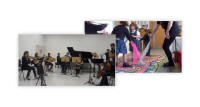
Fishy Moves
First, the children listen in a still, quiet way to Aquarium from Saint-Saens' Carnival of the Animals. One way to achieve 'still and quiet' is to ask the children to find a big space on the floor and lie down pretending to be a starfish, with eyes closed. Make sure they are far enough apart not to nudge each other!
Moving to the music
Next, ask the children to move to the music, keeping feet very quiet. If you have floaty dance scarves, this is an ideal time for the children to use them to express the graceful musical phrases.
I'll share a secret with you now. When I was a child of this age, we had a radio programme in which we had to pretend to be swaying trees and suchlike. I thought it was daft and didn't realise until later in life that moving to music and doing silly things was FUN. That's why I nearly always join in with the children!
Discussion
After listening and moving to the music, show the video so that the children see the instruments being played - notice that there are two pianos as well as orchestral instruments.
After watching, you might like to respond to the children's own comments and then you could ask, 'What makes this music sound like fish gliding through water?' (Logically, it doesn't - but imagination is a wonderful thing!) Ask for lots of describing words for the music and help the children with including using Elements of Music Words such as tinkly timbre for the high notes on the pianos, and the swishy, gliding sound of the glass harmonica near the end. You can't see it in this video but I suspect that the part is played on a glockenspiel, which will be a bigger version of the tuned percussion instruments with shiny, metal bars that children have in school.

Floaty scarves are lovely to use and you can buy a pack cheaply online.

Fishy Sounds (pitch, structure)
This activity really belongs in the Creative Music section but it follows on well here because it's a perfect time for the children to use those little glockenspiels that are often neglected. First you'll need to re-cap on high and low pitch (littlest glockenspiel bars produce the highest pitch and it's unrelated to volume). If you model the activity first, explaining how you are using high and low sounds and fast and slow sounds, the children will understand more easily.
Ask the children, in pairs, to create their own fishy music. Most children are, in my experience, more creative when they have some structure to work with rather than just being asked to make something up. Here's a suggested plan:
- the sun rises
- the fish swim slowly to the surface
- the seagulls fly high, then swoop down quickly
- the fish swim away quickly
- the seagull flies up into the sky
Each pair of children needs one glockenspiel and one untuned instrument. It's possible to do this activity with several pairs of children at once but do make sure that the volume is not too loud - using soft-headed beaters helps.
The children make up their piece of music, practise playing it, then perform it for the rest of the children after which they may revise their music and perform it again. It's great to record the music so that the children can listen to and admire their own work - and, of course, self-assess. Recording the music also provides a record of achievement for you.
Make Graphic Scores
Graphic scores are time-lines for what happens in the music and when. First ask the children how they can show high and low pitch in their graphic score, as well the order in which the sounds are made.


Treasure!
This is the most brilliant activity - you have to do it! You need:
- One large, real parachute
- One 'treasure chest'
- 'treasure' to go in the treasure chest
Fill the treasure chest with different kinds of treasure, for example, sea shells, costume jewellery and gold coins.
Spread the parachute out along the floor, making sure that it covers the treasure chest underneath it, in the centre.
Have each child hold onto a piece on the parachute and lift it up and down to make waves.
Assign so many children at a time the role of divers and ask them to dive for different objects, for example, 'Divers, dive for something that is round' or, 'Divers, dive for something that is blue'.
Make sure that all the children have had a turn at being a diver before the game ends.
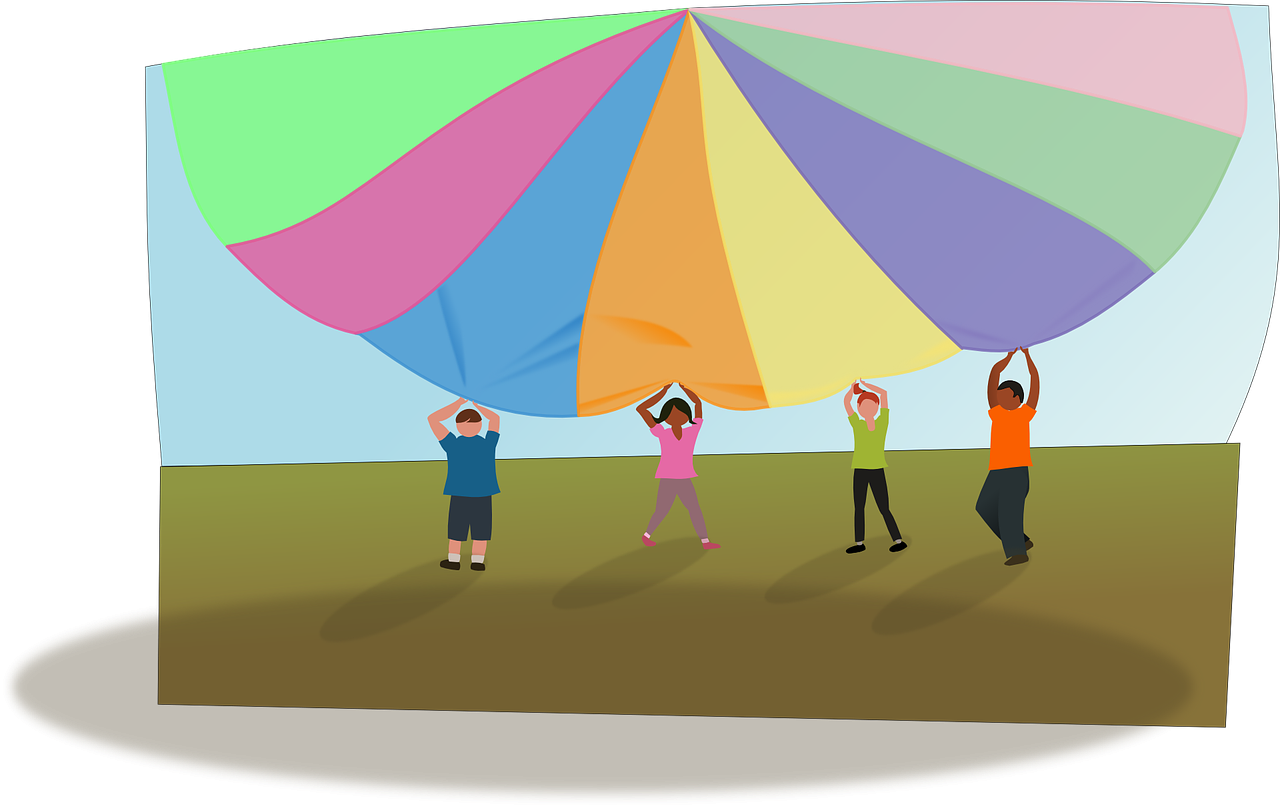
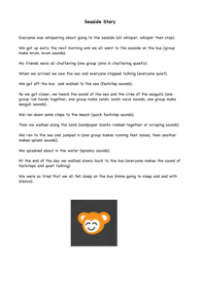
Extension
A really effective thing to do next is to show the children, by indicating silently, when to make the sounds without the story being read, creating a purely musical performance. Record this too and, after the children have listened to both, ask them which version they prefer, and why. Finally, the children could make a big timeline graphic score, showing what happens where.
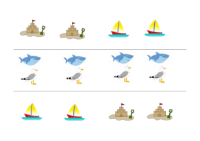
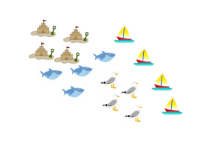
This score is more of a suggestion and is less formally structured than the previous one so it may focus more on the elements of texture, timbre and pitch. The children have the same choice of instruments but the structure is less formal so each group of children can make their own interpretation.

A Seaside Holiday Game
I remember the excitement of having a new beach ball when we went on holiday as children! Here's a game that could also be played by a family on the beach.
Seaside Holidays Stories

First talk with the children about school holidays and outings they have been on. Has anyone been to the seaside?
Then play a song or a piece of music that reminds you personally of holiday time (children love knowing more about you!) and tell a story about a seaside holiday, maybe your own holiday when you were a child, or Maisie Goes on Holiday. I'm a closet Peppa Pig fan and the Peppa Pig Goes on Holiday video is great fun!
Who is the Pirate? (timbre)
This is a voice recognition game so the children need to know each other reasonably well for it to work. Everyone sits in a circle or on the carpet. Each child in turn goes behind a screen so that they can't see the rest of the group. The teacher points to a child within the group, who then says, 'I am the pirate! Hand over your silver and gold!'. The child behind the screen has to guess which child spoke. Every child has a turn at guessing and at being the pirate.
You may be surprised that, even if you ask the children to make it harder by disguising their voices, the other children still guess who it is!


Apusskidusski (two ways!)
This is a traditional Swedish song, with a lovely tune, called I Medelhavet. Here is an approximate translation of the original words, with an additional verse that I made up. It's a song for a mother or father to sing to their child, but you could ask the children what they think the words mean and then they could make up a third verse. In this version, the song is almost like a lullaby.
- In middle ocean
- Sardines are swimming
- Apusskidusski Apusskidu
- But in my own heart
- You're swimming too
- Apusskidusski Apusskidu
- __
- Up in the blue sky
- The birds are flying
- Apusskidusski Apusskidu
- But in my own heart
- You're flying too
- Apusskidusski Apusskidu
In the video, the song is begins in Swedish and is then translated into four other languages, including English. You'll be amazed at how different the song sounds at an upbeat tempo and I wonder how many children will prefer this version! Sometimes children surprise me with a preference for gentle music.
Down There Under the Sea
You'll probably need to listen to this song and sing along several times to learn it really well before teaching it, as it's easy to muddle up the words, big blue ocean and deep blue sea! You could teach it using the First Me, Then You method and then use the sound track to sing along to. The verses go in this order:
- Lots to see
- Lots of fish
- Whales and sharks
- Crabs and shells
For each verse, choose different instruments for children to represent the different things in each verse eg shell shakers for their verse about crabs and shells – shake only on the words crabs and shells, and so on.
Row Row Row Your Boat
The children love doing rowing actions in time with this song, sitting one behind the other with legs out to the sides. I like to do the original verse first, with the ending Life is but a dream - this way, the children enjoy the 'naughty' version about the crocodile even more! The song is so well known that I have not written out the words.


Seaside Graphic Scores (downloadable)
The children need to work in small groups and ideally they be able to choose from a range of untuned and tuned instruments. They could go to the music corner group by group, then come together at the end of the day for performance time.
1/ Structured Seaside Score - Voices (structure, pulse, rhythm)
The children understood the score quickly and we performed it first using just voices. There are three lines to this graphic score and it's read from left to right like text in a book, and like conventional notation. In line 2, the shark and the seagull sound at the same time, like in a musical score where more than one note is played at the same time.

Using Instruments (timbre, structure, texture)
When instruments are used instead of voices, using two instruments played together in line 2 creates a thicker musical texture. I added a steady pulse on the xylophone, to keep everyone in time, which added another layer of complexity.
2/ Unstructured Seaside Score (texture, timbre, pitch)
This score is more of a suggestion and is less formally structured than the previous one so it may focus more on the elements of texture, timbre and pitch. The children have the same choice of instruments but the structure is less formal so each group of children can make their own interpretation.

Stepping Over the Waves Game (a performance piece)
You'll need plenty of space needed – it could be outdoors in summer, or in the hall. I saw it done by a dance company and it's actually really easy!
Half the class lies end to end in 4 rows of around 4 children. They roll slowly towards the other children who walk, in 4 rows of 4 children, towards them and step over them as if stepping over waves. This looks very effective from the front and can be used in an assembly or school performance – but not recommended on a raised stage in case someone rolls off!
You could use any suitable music, but this sea sound-effect works particularly well:


Seaside story sound picture (texture, structure)
Before you begin, download and print out Seaside Story. First, the children listen to the recording below, then ask them where they think it is and what is happening. Notice and draw attention to the fact that the sounds are happening at the same time (thick texture), not on their own, one after the other (thin texture).
Next, ask the children think of all the sounds they might hear on holiday near the sea. Then the children go in groups, with a classroom assistant, to the music corner to experiment with using body sounds, found sounds and instruments to create seaside sounds. Some of the sounds might be made on their own (thin texture) and some at the same time as others, creating a thicker texture.
When each group has had their turn at the music table, explain that you are going to make a sound picture in which each group makes the sound they are responsible for at the right time in the story. Then read the story and ask for suggestions of who should make which sounds, and where. The story starts and ends with silence. When everyone is ready, read the story accompanied by the sounds, and make a recording of it.
Extension
A really effective thing to do next is to show the children, by indicating silently, when to make the sounds without the story being read, creating a purely musical performance. Record this too and, after the children have listened to both, ask them which version they prefer, and why. Finally, the children could make a big timeline graphic score, showing what happens where.


Fishy Moves
First, the children listen in a still, quiet way to Aquarium from Saint-Saens' Carnival of the Animals. One way to achieve 'still and quiet' is to ask the children to find a big space on the floor and lie down pretending to be a starfish, with eyes closed. Make sure they are far enough apart not to nudge each other!
Moving to the music
Next, ask the children to move to the music, keeping feet very quiet. If you have floaty dance scarves, this is an ideal time for the children to use them to express the graceful musical phrases.
I'll share a secret with you now. When I was a child of this age, we had a radio programme in which we had to pretend to be swaying trees and suchlike. I thought it was daft and didn't realise until later in life that moving to music and doing silly things was FUN. That's why I nearly always join in with the children!
Discussion
After listening and moving to the music, show the video so that the children see the instruments being played - notice that there are two pianos as well as orchestral instruments.
After watching, you might like to respond to the children's own comments and then you could ask, 'What makes this music sound like fish gliding through water?' (Logically, it doesn't - but imagination is a wonderful thing!) Ask for lots of describing words for the music and help the children with including using Elements of Music Words such as tinkly timbre for the high notes on the pianos, and the swishy, gliding sound of the glass harmonica near the end. You can't see it in this video but I suspect that the part is played on a glockenspiel, which will be a bigger version of the tuned percussion instruments with shiny, metal bars that children have in school.

Floaty scarves are lovely to use and you can buy a pack cheaply online.

Fishy Sounds (pitch, structure)
This activity really belongs in the Creative Music section but it follows on well here because it's a perfect time for the children to use those little glockenspiels that are often neglected. First you'll need to re-cap on high and low pitch (littlest glockenspiel bars produce the highest pitch and it's unrelated to volume). If you model the activity first, explaining how you are using high and low sounds and fast and slow sounds, the children will understand more easily.
Ask the children, in pairs, to create their own fishy music. Most children are, in my experience, more creative when they have some structure to work with rather than just being asked to make something up. Here's a suggested plan:
- the sun rises
- the fish swim slowly to the surface
- the seagulls fly high, then swoop down quickly
- the fish swim away quickly
- the seagull flies up into the sky
Each pair of children needs one glockenspiel and one untuned instrument. It's possible to do this activity with several pairs of children at once but do make sure that the volume is not too loud - using soft-headed beaters helps.
The children make up their piece of music, practise playing it, then perform it for the rest of the children after which they may revise their music and perform it again. It's great to record the music so that the children can listen to and admire their own work - and, of course, self-assess. Recording the music also provides a record of achievement for you.
Make Graphic Scores
Graphic scores are time-lines for what happens in the music and when. First ask the children how they can show high and low pitch in their graphic score, as well the order in which the sounds are made.


Treasure!
This is the most brilliant activity - you have to do it! You need:
- One large, real parachute
- One 'treasure chest'
- 'treasure' to go in the treasure chest
Fill the treasure chest with different kinds of treasure, for example, sea shells, costume jewellery and gold coins.
Spread the parachute out along the floor, making sure that it covers the treasure chest underneath it, in the centre.
Have each child hold onto a piece on the parachute and lift it up and down to make waves.
Assign so many children at a time the role of divers and ask them to dive for different objects, for example, 'Divers, dive for something that is round' or, 'Divers, dive for something that is blue'.
Make sure that all the children have had a turn at being a diver before the game ends.


Extension
A really effective thing to do next is to show the children, by indicating silently, when to make the sounds without the story being read, creating a purely musical performance. Record this too and, after the children have listened to both, ask them which version they prefer, and why. Finally, the children could make a big timeline graphic score, showing what happens where.


This score is more of a suggestion and is less formally structured than the previous one so it may focus more on the elements of texture, timbre and pitch. The children have the same choice of instruments but the structure is less formal so each group of children can make their own interpretation.
